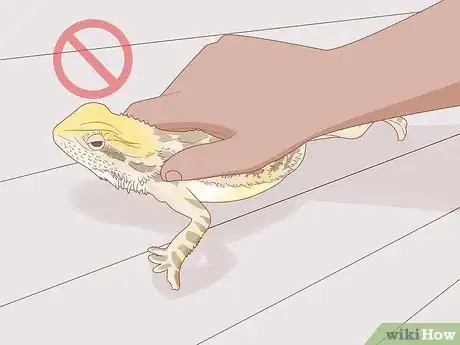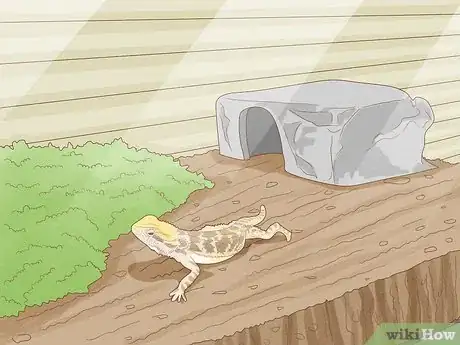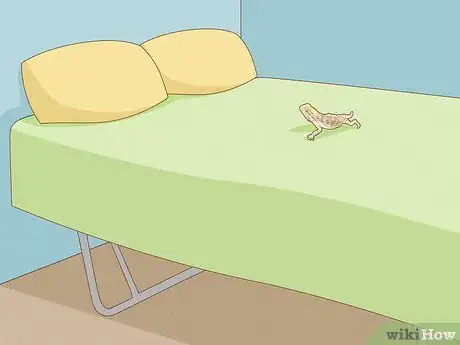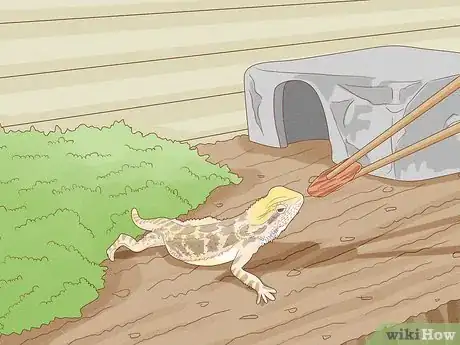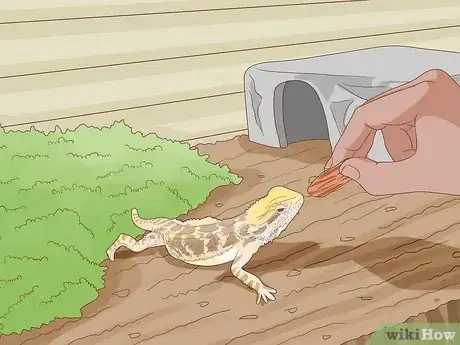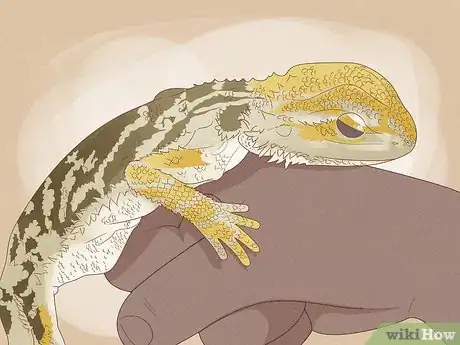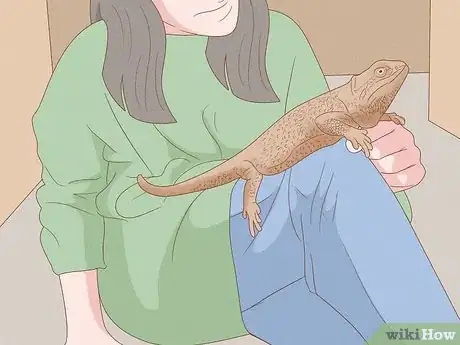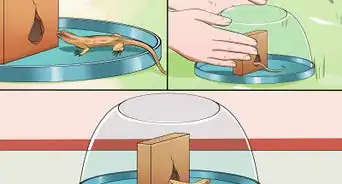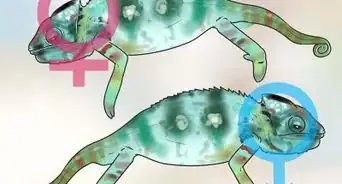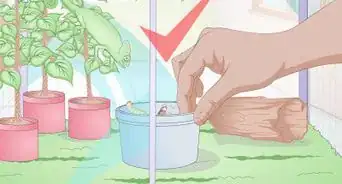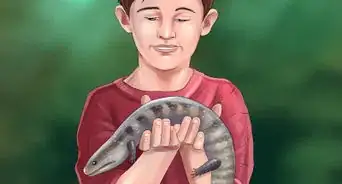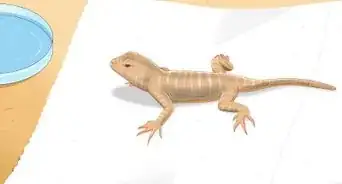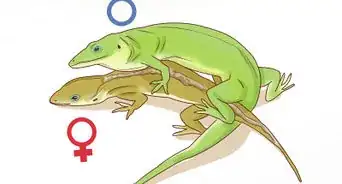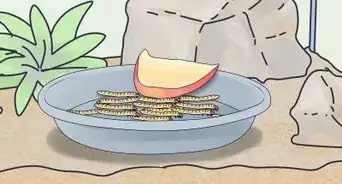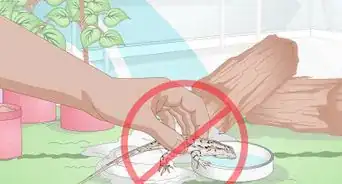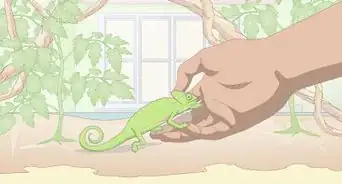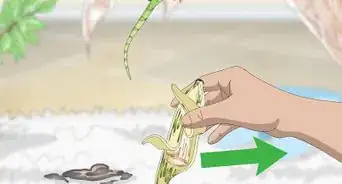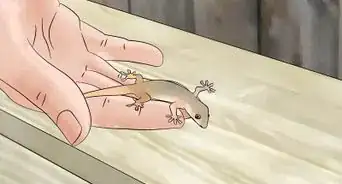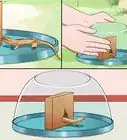X
wikiHow is a “wiki,” similar to Wikipedia, which means that many of our articles are co-written by multiple authors. To create this article, volunteer authors worked to edit and improve it over time.
This article has been viewed 12,689 times.
Learn more...
So, your pet lizard shies away when your friend comes to see it, or it just hides under its rock and won't let you observe it. If you want to change this, read on. You will have a lively, active reptile in no time at all.
Steps
-
1Avoid handling your lizard by force. This is exactly the opposite of what you want to do. Force will only teach your pet that you are a potential threat, and the outcome will be a deeper distrust and fear.
-
2Leave your lizard alone for a few days. It is probably very tempting to do something more than leave food and water, but your lizard needs to feel secure in this environment. If he/she learns that you are actively seeking him/her out, he/she will just hide more. Letting them do their own thing for a while will reduce stress on the lizard's part, which makes taming it easier.Advertisement
-
3If you have to take out your lizard or you are so tempted that you have to, then make it a positive experience. Bring the lizard onto your bed while you watch TV. Place a hide onto your bed for the lizard or let the lizard explore, just don't lose the lizard.
-
4Start holding your lizard's food out using chopsticks, tongs, or something similar. Don't use your fingers, just your tongs. Continue doing this for a few weeks, and trust between you and your lizard will grow. Actual contact with the lizard at this point is not advised, and should be avoided if at all possible.
- By this point, your lizard should seek you out for food. This is good, and means you have been doing the right thing. Now the only way for your lizard to gain further trust in you is to explore. It probably wants to know who you are. So how do you do this, you may ask? Stick your hand in the tank, of course! Don't be too forceful, or your lizard will become scared. Your reptile will come and explore you. If it takes a few days, don't be worried. This is normal. Your hand is new, and can be somewhat scary to your little friend.
-
5Advance from the chopsticks to your fingers. This is where physical contact comes into play. Your lizard may be a bit hesitant, but don't worry. Once again, this is new for your scaly friend. Be careful not to hurt your pet.
-
6Try to pick it up after a week or so. If it runs and hides, give it a few more days. Although many people think picking it up will show it that it should not be scared, this is far from the truth. Once again, you are big and scary to your lizard.
-
7Done! Your lizard will go up to people. As long as you protect this sociability, you can be guaranteed another success.
Advertisement
Community Q&A
-
QuestionCan I get a disease if a lizard bites me?
 Community AnswerIt's not likely. Just wash your hands -- you'll be fine.
Community AnswerIt's not likely. Just wash your hands -- you'll be fine. -
QuestionMy lizard won't eat in front of me. How do I begin to tame him if I can't tempt him with food?
 MarlsbadCommunity AnswerYou need to be patient. Let your animal get comfortable feeding without you watching. It also may be nocturnal and not want to eat during the times you are trying to feed/watch.
MarlsbadCommunity AnswerYou need to be patient. Let your animal get comfortable feeding without you watching. It also may be nocturnal and not want to eat during the times you are trying to feed/watch. -
QuestionDoes a lizard eat grass and leaves or fruits and vegetables?
 Community AnswerIguanas, bearded dragons, uromastyx lizards and some skinks are omnivorous, hence they'll be able to feed on either. Other lizards are strict carnivores, mostly feeding on small invertebrates.
Community AnswerIguanas, bearded dragons, uromastyx lizards and some skinks are omnivorous, hence they'll be able to feed on either. Other lizards are strict carnivores, mostly feeding on small invertebrates.
Advertisement
Warnings
- Some lizards bite. Being bitten by a lizard is no big deal as long as it doesn't break the skin, but it does hurt!⧼thumbs_response⧽
Advertisement
About This Article
Advertisement
